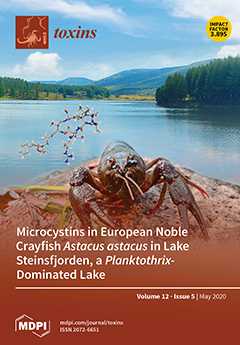The possible relationship between periodontal disease resulting from the infection of gingival tissue by the Gram-negative bacterium
Porphyromonas gingivalis (
P. gingivalis) and the development of neuroinflammation remains under investigation. Recently,
P. gingivalis lipopolysaccharide (LPS) was reported in the human brain, thus
[...] Read more.
The possible relationship between periodontal disease resulting from the infection of gingival tissue by the Gram-negative bacterium
Porphyromonas gingivalis (
P. gingivalis) and the development of neuroinflammation remains under investigation. Recently,
P. gingivalis lipopolysaccharide (LPS) was reported in the human brain, thus suggesting it might activate brain microglia, a cell type participating in neuroinflammation. We tested the hypothesis of whether in vitro exposure to ultrapure
P. gingivalis LPS may result in classical and alternative activation phenotypes of rat microglia, with the concomitant release of cytokines and chemokines, as well as superoxide anion (O
2−), thromboxane B
2 (TXB
2), and matrix metalloprotease-9 (MMP-9). After an 18-h exposure of microglia to
P. gingivalis LPS, the concentration-dependent responses were the following: 0.1–100 ng/mL
P. gingivalis LPS increased O
2− generation, with reduced inflammatory mediator generation; 1000–10,000 ng/mL
P. gingivalis LPS generated MMP-9, macrophage inflammatory protein 1α (MIP-1α/CCL3), macrophage inflammatory protein-2 (MIP-2/CXCL2) release and significant O
2− generation; 100,000 ng/mL
P. gingivalis LPS sustained O
2− production, maintained MMP-9, tumor necrosis factor-α (TNF-α), and interleukin-6 (IL-6) release, and triggered elevated levels of MIP-1α/CCL3, MIP-2/CXCL2, and cytokine-induced neutrophil chemoattractant 1 (CINC-1/CXCL-1), with a very low release of lactic dehydrogenase (LDH). Although
P. gingivalis LPS was less potent than
Escherichia coli (
E. coli) LPS in stimulating TXB
2, MMP-9, IL-6 and interleukin 10 (IL-10) generation, we observed that it appeared more efficacious in enhancing the release of O
2−, TNF-α, MIP-1α/CCL3, MIP-2/CXCL2 and CINC-1/CXCL-1. Our results provide support to our research hypothesis because an 18-h in vitro stimulation with ultrapure
P. gingivalis LPS resulted in the classical and alternative activation of rat brain microglia and the concomitant release of cytokines and chemokines.
Full article






